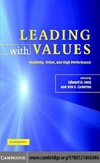- 2 402 202 книги
- Поиск
libcats.org









Design of Organic Solids
Edwin Weber, Y. Aoyama, M.R. Caira, G.R. Desiraju, J.P. Glusker, A.D. Hamilton, R.E. Melendez, A. NangiaThe lively interest in organic solids stems from our increasing ability to manipulate and tune the properties of organic and organometallic materials (e.g. nonlinear behavior or electrical conductivity) by systematic variations of the molecular components. New insight derived from modern supramolecular chemistry are also allowing molecular level control of solid-state structure with the arrangement of functional molecular components into a defined solid architecture. Examples include the creation of nanoporous host lattices containing functional guest molecules and of defined nanomaterials. In this book, leading experts in the field give a state-of the art overview of our current knowledge and of future prospects, with chapters on directional aspects of intermolecular interactions, supramolecular synthon approaches, hydrogen-bonded tape, ribbon and sheet motifs, designed organic zeolite analogues, and crystalline polymorphism.
EPUB | FB2 | MOBI | TXT | RTF
* Конвертация файла может нарушить форматирование оригинала. По-возможности скачивайте файл в оригинальном формате.
Популярные книги за неделю:

Проектирование и строительство. Дом, квартира, сад
Автор: Петер Нойферт, Автор: Людвиг Нефф
Размер книги: 20.83 Mb

Система упражнений по развитию способностей человека (Практическое пособие)
Автор: Петров Аркадий НаумовичКатегория: Путь к себе
Размер книги: 818 Kb

Сотворение мира (3-х томник)
Автор: Петров Аркадий НаумовичКатегория: Путь к себе
Размер книги: 817 Kb

Радиолюбительские схемы на ИС типа 555
Автор: Трейстер Р.Категория: Электротехника и связь
Размер книги: 13.64 Mb
Только что пользователи скачали эти книги:

Frommer's China
Автор: Simon Foster, Автор: Jen Lin-Liu, Автор: Sharon Owyang, Автор: Sherisse Pham, Автор: Beth Reiber, Автор: Lee Wing-sze, Автор: Christoper Winnan
Размер книги: 17.31 Mb

CIMA - C03 Fundamentals of Business Mathematics: Study Text
Автор: Bpp Learning Media
Размер книги: 6.00 Mb

Leading with Values: Positivity, Virtue and High Performance
Автор: Hess E.D. (ed.), Автор: Cameron K.S. (ed.)Категория: Экономика и финансы
Размер книги: 1011 Kb

The Rough Guide to the Pyrenees 6 (Rough Guide Travel Guides)
Автор: Marc Dubin, Автор: Rough Guides
Размер книги: 35.29 Mb

Wächter der Ewigkeit: Roman
Автор: Sergej Lukianenko, Автор: Sergei Lukyanenko
Размер книги: 1.77 Mb






